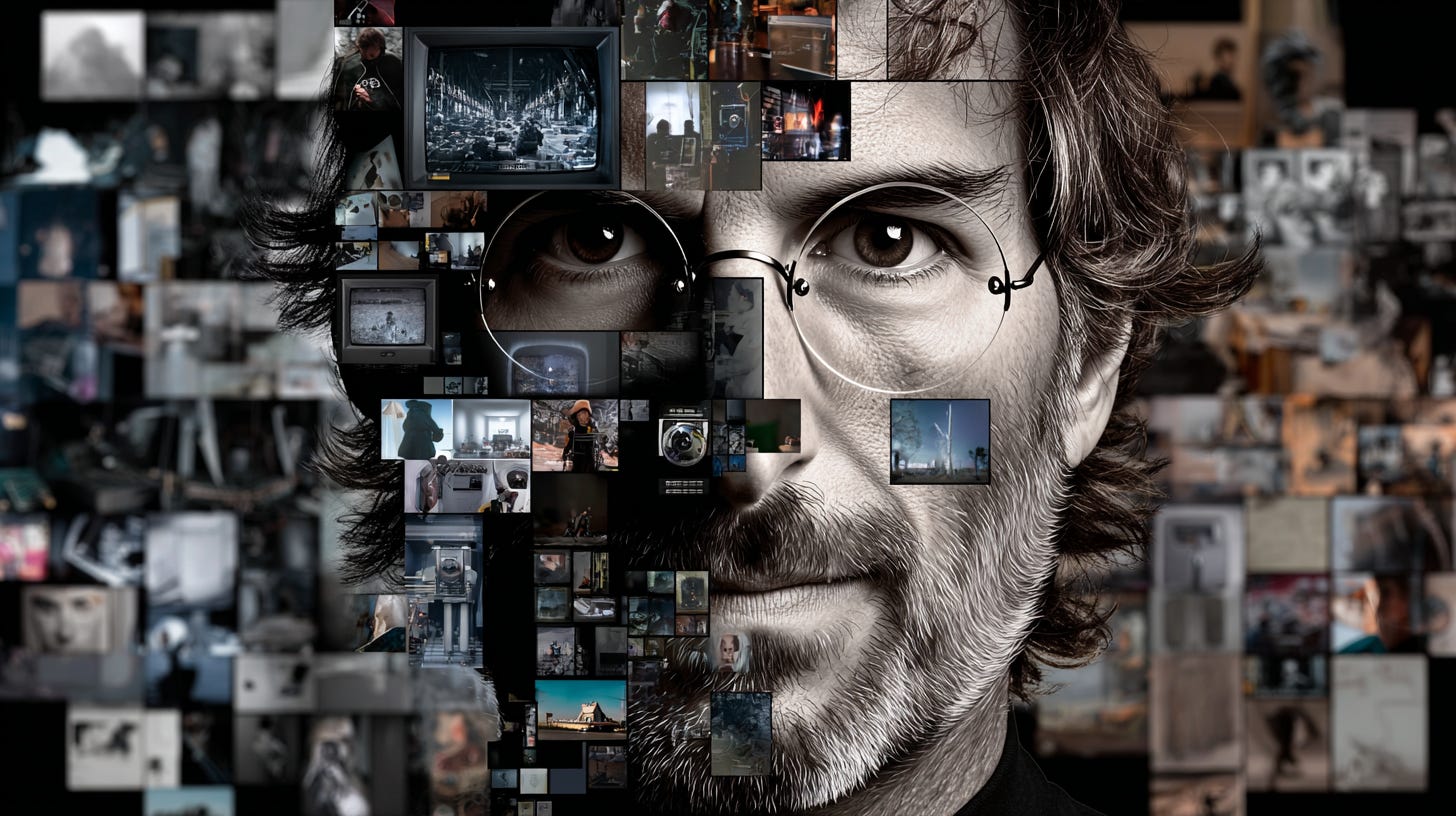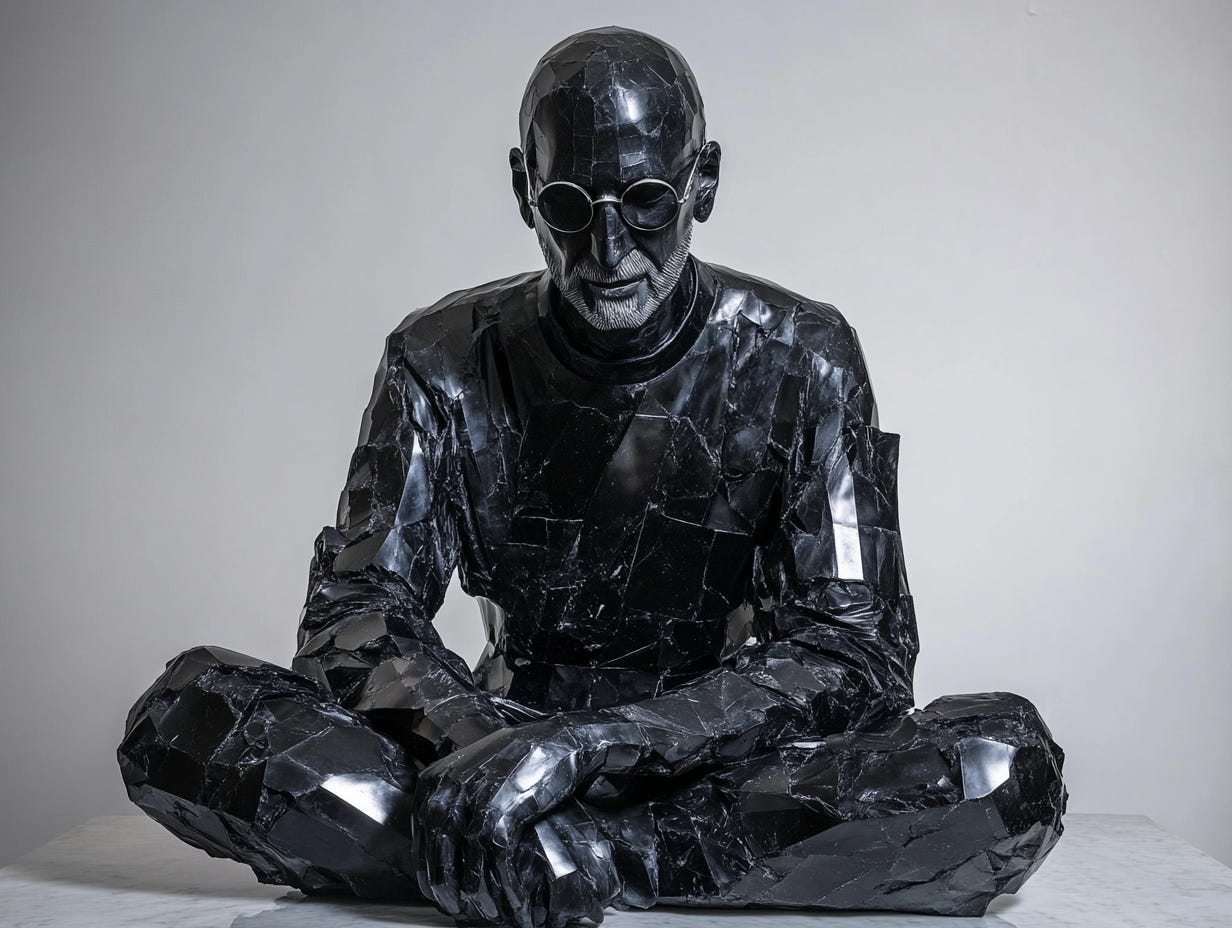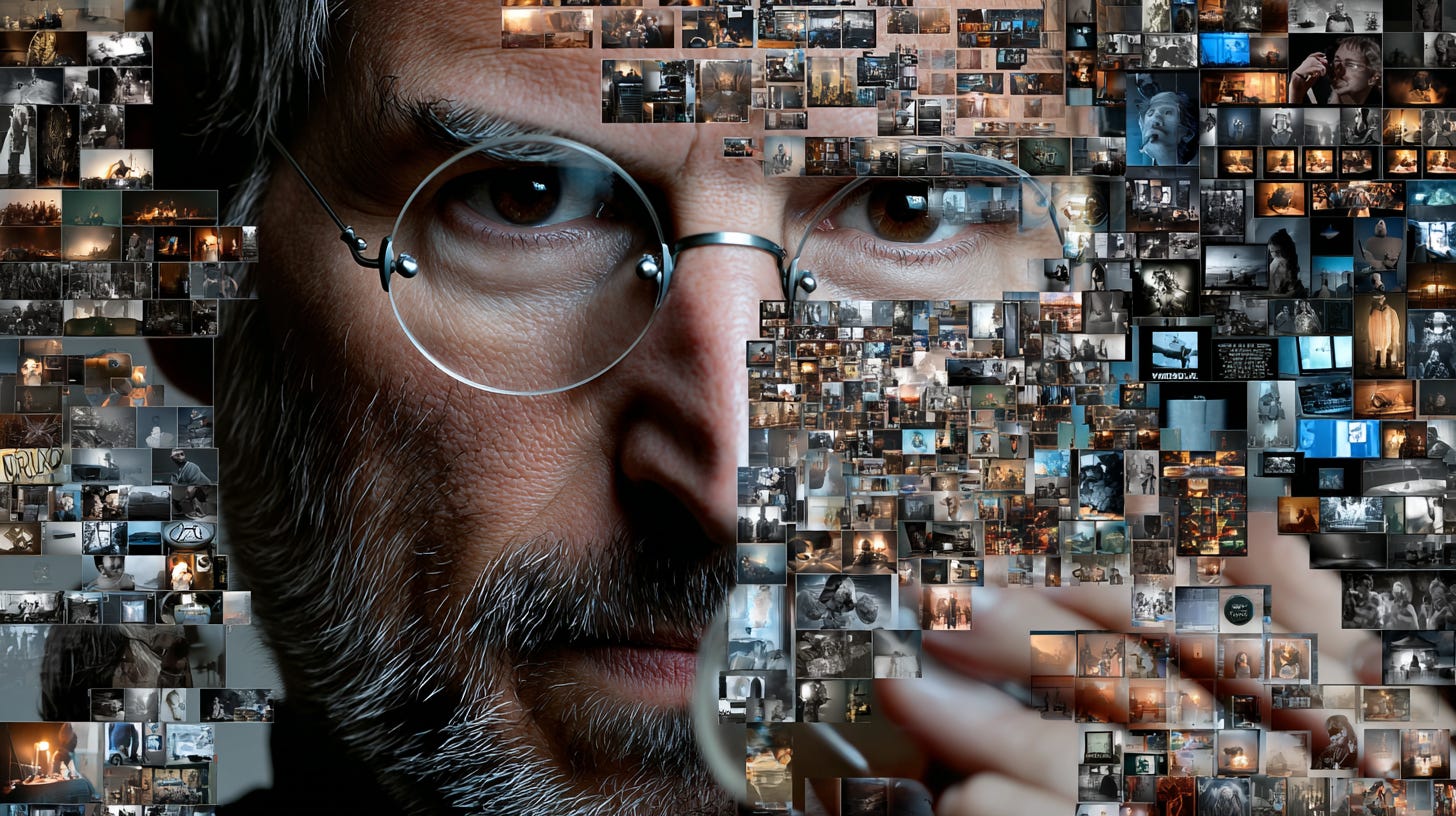The Myth of the Finished Product
Steve Jobs could barely solder. The Apple I was just a circuit board inside a wooden frame. But in that frame, everything was already there: the understanding that the challenge wasn’t (just) technical—it was cultural.
It wasn’t about making computers work. It was about making people want them.
Empower people. Build an object that chooses you back as you choose it.
The text-based AIs we use today feel like those old gray machines that only understood code—pre-Jobs computers.
Prompts, scripts, modules. No interface. No story. No “product.”
So I wrote a piece—for a tech scouting magazine I run for a large company—calling for a new Steve Jobs. Someone to take us beyond the limits of prompting and give us products people could fall in love with.
And maybe that’s not wrong.
We’re full of Wozes building for other Wozes.
No Macintosh team. No artists in the room. No reason to stay.
Is Jobs what we’re missing— or are we just waiting for the next cosplay CEO selling comfort dressed as vision? That time — my friends — I’m afraid, is definitively over.
Tools, not Products
AI isn’t a product revolution. It’s a tool explosion.
Ten new tools a day, all aware that most won’t survive. Competition, obsolescence, speed. Meme-speed extinction. They’re powerful, but don’t know who they’re for. Dev interfaces, lab outputs. No deep ambition. Just a desperate race to stay relevant.
They still run on command lines, even when they pretend not to.
White-screen prompts. Isolated functions. No care.
It’s not a system. It’s a kit. No guarantee they’ll be useful twice.
The result?
A chaotic sandbox. Naturally unstable.
AI is everywhere. None of it is finished.
And no user really knows if they’ll use that tool next week.
You might think it’s just a phase.
That Altman and Ive will pull another rabbit out of the hat. I used to think that too.
It would be comforting to get another iPhone-type object—one we could upgrade for the next 20 years, a few megapixels at a time.
But that’s just the past talking.
3. The Flip
Faced with a scenario this strange, you’ve got two options.
1. Complain like an old man in the Muppets balcony. Long for Jobs.
2. Accept that consumerization only moves forward. And new rules are emerging from the chaos of prompts.
The new rule isn’t to build software people love.
The new rule is: software as we know it may cease to exist.
No more products. No more releases.
Just temporary outputs. Responses to ever-changing questions.
Software isn’t bought. It’s generated. Used. Forgotten.
It’s not just design that breaks.
Lifecycles break.
Teams break.
The very idea of “shipping” breaks.
We’re entering an era where code is ephemeral, personal, unshared.
Where generation is the new trial’n errors.
Where prompts are more powerful than architecture.
4. VIBE Coding vs Digital Junk
Welcome to the era of VIBE coding.
There’s no brief. Just a mood. A vague intent. An impulsive request thrown into a prompt.
“Make me an app that tracks my dog’s sleep cycles.”
“Generate a CRM interface I’ll use for a three-week project.”
“Build a dashboard with this data. No—wait—new data.”
The output is instant. And getting faster.
But every app is a snapshot. Every tool, disposable.
Built to be used once. Maybe by one person. For one task.
This isn’t software. It’s junkware.
Generated with the same casual flick as an AI image.
Iterate a few times, then throw 90% away.
A constant stream of objects with no future and no story.
With the cost of generation so much lower, no one bothers to ask why anymore.
Maybe we’ll hit a wall—an economic or energy crash.
But in the meantime, the vibe is good enough, AIs are racing ahead, and AI experts are getting rich building the next Babel tower.
“Maybe AI will kill us all, but in the meantime we’ll build great companies.” (cit.)
Life after the Product
Every tech revolution reshapes the social structure.
This one already is.
If software stops being a product, those who build it stop being companies.
No startups. No agencies. No teams.
Just armies of one-person companies with N AIs.
Micro-firms built on infrastructures they don’t own—but know how to orchestrate.
No CTO. No designer. Just prompts and output.
Marc Andreessen says the sweet spot is between Series C and Series E— big enough to matter, small enough to move. He’s describing the last golden zone inside big companies, before inertia kicks in.
But that’s not where we’re headed.
For everyone outside the fortress, the future doesn’t scale—it shatters.
The firm dissolves. The product disappears.
What remains is AI-powered dust: millions of small entities, ephemeral, reactive, fluid.
A new kind of smart dust.
Not sensors, but skills. Not hardware, but execution.
Distributed intelligence with no headquarters, no hierarchy, no face.
Sam Altman puts it clearly:
The one-billion-dollar company with a single employee isn’t an anomaly. It’s the goal.
Work isn’t disappearing. It’s changing state.
From solid—fixed office, fixed tools, fixed output— to liquid. Locationless, tool-less, boundaryless.
Just flow.
And for times like these, we already have the best advice:
Be water, my friend.







Agree, this isn’t about waiting for a visionary to return—Jobs isn’t coming back, and the pixel-polish era is over. But I protest the framing that leaves us only two choices: lament the loss or embrace the chaos.
The future is not binary. It’s a spectrum. A field of unfolding probabilities.
The real challenge is that people crave simplicity—boom or doom, Jobs or junkware—but the world isn’t built like that. It’s complex, adaptive, 4D—think Death’s End, not Black Mirror.
We don’t need another product messiah. We need to learn how to co-orchestrate emergence.
Not just tools, but stories. Not just prompts, but systems of care.
No more binaries. The real work lies in the spectrum—in the messy middle, where design, meaning, and intelligence evolve together.
Postscript to the article.
Someone — wise and generous — wrote to me privately:
“I don’t think everything else will just disappear.
We’ll still need complex systems, infrastructure, tools that serve collectives.
The idea that we’ll be left only with ephemeral apps feels like an oversimplification.”
You are right.
But the point of the piece wasn’t to predict.
It was to provoke. To name a risk: that software, politics, and digital culture may all be heading down the same path.
Social media? Trash.
Politics? Trash.
Software? …
Prompts as impulse. Apps as disposable gestures. Result: digital junk.
That’s not the future I want.
It’s not a place where I’d want to retire.
Let alone raise children.
And that’s exactly why we should talk about it—now.